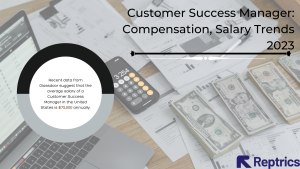Table of Contents
In the world of B2B SaaS, customer satisfaction is one of the most critical metrics for measuring success. Two of the most commonly used methods to gauge customer satisfaction are the Net Promoter Score (NPS) and Customer Satisfaction Score (CSAT). Although they are both used to measure customer satisfaction, they are different in their approach and can provide different insights for customer success teams.
In this blog, we’ll dive into the details of NPS and CSAT, their differences, and their role in customer success. We’ll explore how they are calculated, what they measure, and how they can be used to improve customer success strategies. Additionally, we’ll discuss the pros and cons of each method and provide some tips on when to use one over the other.
What is Net Promoter Score (NPS)?
The Net Promoter Score (NPS) was developed by Fred Reichheld, a Bain & Company consultant, in 2003. Reichheld believed that traditional customer satisfaction surveys were too complicated and didn’t provide actionable insights for businesses. He wanted to create a metric that was easy to understand and would allow businesses to quickly identify areas for improvement.
To develop the NPS, Reichheld conducted extensive research on customer loyalty and retention. He found that customers who were willing to recommend a company to others were more likely to be loyal and continue doing business with that company. Based on this insight, Reichheld developed the NPS question: “On a scale of 0-10, how likely are you to recommend our product/service to a friend or colleague?”
Net Promoter Score (NPS) is a metric used to measure customer loyalty. It’s based on the question: “On a scale of 0-10, how likely are you to recommend our product/service to a friend or colleague?”
Customers are then categorized into three groups: Promoters (score of 9-10), Passives (score of 7-8), and Detractors (score of 0-6). The NPS is calculated by subtracting the percentage of Detractors from the percentage of Promoters. The resulting score can range from negative 100 (if all customers are Detractors) to 100 (if all customers are Promoters).
NPS is a useful metric because it focuses on the customers who are most likely to promote your business. Promoters are customers who are so satisfied with your product or service that they’re willing to recommend it to others. By identifying these customers and understanding what they like about your business, you can tailor your marketing efforts to attract more customers like them.
What is Customer Satisfaction Score (CSAT)? What does CSAT stand for?
The Customer Satisfaction Score (CSAT) has been used by businesses for decades as a metric to measure how satisfied customers are with their products or services. The origins of CSAT are not attributed to any one person or organization, but rather the concept has evolved over time.
The earliest use of customer satisfaction surveys can be traced back to the 1940s when companies began using customer feedback to improve their products and services. However, it wasn’t until the 1980s that businesses began to focus on customer satisfaction as a key metric for measuring success.
In the 1980s, researchers such as David Garvin and Leonard Berry began to study the importance of customer satisfaction and its impact on business success. They found that satisfied customers were more likely to remain loyal, purchase more products or services, and recommend the business to others.
Based on this research, businesses began to develop more formalized customer satisfaction surveys. These surveys typically consisted of a series of questions that asked customers to rate their satisfaction with various aspects of the business, such as product quality, customer service, and overall experience.
Customer Satisfaction Score (CSAT) is a metric used to measure how satisfied customers are with a specific interaction or experience with your business. It’s typically based on a single question: “How satisfied were you with your experience?” Customers are then asked to rate their satisfaction on a scale of 1-5, 1-7, or 1-10. The resulting score is calculated by dividing the number of satisfied customers by the total number of respondents and multiplying by 100.
CSAT is useful because it provides insight into how customers feel about a specific experience or interaction with your business.
NPS vs. CSAT: Which Metric Should You Use for Your B2B SaaS?
The choice between NPS and CSAT depends on what you want to measure. If you want to measure overall customer loyalty and identify customers who are most likely to promote your business, NPS is the better choice. However, if you want to measure how satisfied customers are with a specific interaction or experience with your business, CSAT is the better choice.
It’s also worth noting that NPS and CSAT can be used together to provide a more comprehensive view of customer satisfaction. For example, you might use NPS to measure overall customer loyalty and CSAT to measure satisfaction with specific interactions or experiences.
Today, the CSAT score is widely used by businesses to measure customer satisfaction and identify areas for improvement. It remains a popular metric for businesses of all sizes and industries, and it is often used in conjunction with other customer satisfaction metrics, such as the Net Promoter Score (NPS), to provide a more comprehensive view of customer satisfaction.
Both NPS and CSAT are useful metrics for measuring customer satisfaction. NPS is better for measuring overall customer loyalty and identifying customers who are most likely to promote your business. CSAT is better for measuring satisfaction with specific interactions or experiences with your business. By understanding the differences between these two metrics, you can choose the one that’s best suited for your business and use it to improve customer satisfaction and loyalty.
Different Use Cases of NPS Surveys
While the Net Promoter Score (NPS) is most commonly used as a metric to measure customer loyalty and retention, it can also be used in a variety of other ways. Here are some unique usages of NPS
- Employee engagement: Just as NPS can be used to measure customer loyalty, it can also be used to measure employee loyalty and engagement. By asking employees how likely they are to recommend the company as a place to work, businesses can gain insights into employee satisfaction and identify areas for improvement.
- Product development: NPS can be used to measure customer satisfaction with specific products or features. By asking customers how likely they are to recommend a particular product or feature, businesses can identify areas for improvement and prioritize product development efforts.
- Brand awareness: NPS can be used to measure brand awareness and perception. By asking customers how likely they are to recommend the brand to others, businesses can gain insights into brand awareness and identify opportunities to improve brand perception.
- Competitive analysis: NPS can be used to compare a business’s customer loyalty to that of its competitors. By benchmarking its NPS against its competitors, businesses can identify areas where they are outperforming or underperforming and develop strategies to improve.
- Customer segmentation: NPS can be used to segment customers into different categories based on their loyalty. By grouping customers based on their NPS score, businesses can develop targeted marketing and retention strategies for each segment.
Overall, the versatility of the NPS score makes it a valuable metric for B2B SaaS in a variety of industries and contexts.
Different Use Cases of CSAT Surveys
CSAT (Customer Satisfaction Score) is a valuable metric for B2B SaaS companies as it helps them to measure how satisfied their customers are with their products or service. Here are some unique usages of CSAT for B2B SaaS companies:
- Identify product or service-related issues: CSAT can help B2B SaaS companies identify any issues related to their product or service. For instance, if a customer rates their experience with the product/service as unsatisfactory, it could indicate a problem with the product or service. By identifying such issues early on, companies can make the necessary changes and improvements to enhance customer satisfaction.
- Evaluate customer support: B2B SaaS companies can use CSAT to evaluate their customer support. Customers can rate their experience with customer support, and if the score is low, the company can analyze what went wrong and take corrective measures.
- Measure success against competitors: CSAT can help B2B SaaS companies measure their success against their competitors. By comparing their CSAT scores with their competitors, companies can identify areas of improvement and strive to offer a better product or service to their customers.
- Gauge customer loyalty: CSAT can also help B2B SaaS companies gauge customer loyalty. A high CSAT score indicates that customers are satisfied with the product or service and are likely to remain loyal to the company. This information is essential for companies to retain their customers and drive growth.
- Identify cross-selling and upselling opportunities: B2B SaaS companies can use CSAT to identify cross-selling and upselling opportunities. A satisfied customer is more likely to purchase additional products or services, and a high CSAT score could indicate a willingness to explore new products or services offered by the company.
How to Calculate NPS Step-by-Step
To calculate the Net Promoter Score (NPS), follow these steps:
- Ask the NPS question: The first step is to ask the NPS question to customers: “On a scale of 0 to 10, how likely are you to recommend our company/product/service to a friend or colleague?”
- Categorize responses: Categorize customer responses into three groups: Promoters (respondents who give a score of 9 or 10), Passives (respondents who give a score of 7 or 8), and Detractors (respondents who give a score of 0 to 6).
- Calculate the percentage of each category: Calculate the percentage of respondents in each category by dividing the number of respondents in each group by the total number of respondents.
- Calculate the NPS: To calculate the NPS, subtract the percentage of Detractors from the percentage of Promoters. The formula for calculating NPS is
NPS = % Promoters – % Detractors.
For example, if 100 customers respond to the NPS question and 50 give a score of 9 or 10 (Promoters), 20 give a score of 7 or 8 (Passives), and 30 give a score of 0 to 6 (Detractors), the NPS calculation would be:
% Promoters = 50%
% Passives = 20%
% Detractors = 30%
NPS = % Promoters – % Detractors
NPS = 50% – 30%
NPS = 20
Therefore, the NPS score for this business would be 20.
The NPS score ranges from -100 to +100, with higher scores indicating a more positive overall sentiment and a greater likelihood of customer loyalty and advocacy. A score of 0 indicates an equal number of Promoters and Detractors, while a negative score indicates more Detractors than Promoters.
How to calculate CSAT?
To calculate a Customer Satisfaction Score (CSAT), follow these steps:
- Ask the CSAT question: The first step is to ask the CSAT question to customers after they have interacted with your product, service, or company: “How satisfied are you with your experience with our company/product/service?”
- Use a rating scale: Use a rating scale to measure satisfaction, such as a 1-5 scale (1 being “Very Unsatisfied” and 5 being “Very Satisfied”) or a 1-10 scale (1 being “Not at all satisfied” and 10 being “Extremely satisfied”).
- Calculate the percentage of satisfied customers: Calculate the percentage of respondents who give a rating of 4 or 5 (on a 1-5 scale) or 8, 9, or 10 (on a 1-10 scale). This percentage represents the percentage of customers who are satisfied with their experience.
- Calculate the CSAT score: The CSAT score is the percentage of satisfied customers. Multiply the percentage of satisfied customers by 100 to get the CSAT score as a percentage.
For example, if you ask the CSAT question to 100 customers and 80 of them give a rating of 4 or 5, the calculation for CSAT would be:
% of satisfied customers = (80/100) x 100 = 80%
Therefore, the CSAT score for this business would be 80%.
The CSAT score ranges from 0% to 100%, with higher scores indicating a higher level of customer satisfaction. A score of 100% indicates that all customers are completely satisfied with their experience, while a score of 0% indicates that no customers are satisfied with their experience.
Customer Success Software can improve the process of NPS or CSAT in several ways:
- Automate survey distribution: A Customer Success Software can automate the distribution of NPS or CSAT surveys to customers after specific interactions or touchpoints. This ensures that surveys are sent out consistently and in a timely manner, without relying on manual processes.
- Customize survey questions: A Customer Success Software can allow companies to customize survey questions to match their specific business needs. This flexibility ensures that companies can gather the information that is most relevant to their business and customer base.
- Provide real-time feedback: A Customer Success Software can provide real-time feedback to Customer Success teams when a customer submits a NPS or CSAT survey response. This allows teams to immediately follow up with customers who are dissatisfied or at risk of churning.
- Centralize survey data: A Customer Success Software can centralize survey data in one location, making it easy for teams to access and analyze. This allows teams to identify trends over time and track progress on specific initiatives.
- Segment survey data: A Customer Success Software can allow teams to segment survey data by specific customer attributes, such as industry, product usage, or customer size. This allows teams to identify trends and patterns within different customer segments and tailor their strategies accordingly.
- Integrate survey data with other customer data: A Customer Success Software can integrate survey data with other customer data, such as support tickets, product usage data, and customer communication history. This provides a comprehensive view of the customer and enables teams to make data-driven decisions.
Overall, a Customer Success Software like Reptrics can improve the NPS or CSAT process by streamlining survey distribution, customizing questions, providing real-time feedback, centralizing data, segmenting data, and integrating survey data with other customer data.
While there are many examples of how Customer Success Software can improve the process of NPS or CSAT surveys, here are a few data-backed examples:
- Improved survey response rates: A study by the Harvard Business Review found that personalized survey requests sent via email can improve response rates by up to 50%. Reptrics can automate the distribution of personalized surveys, making it easier for customers to provide feedback and improving response rates.
- Faster response times: A study by HubSpot found that 90% of customers expect a response to a support request within 10 minutes. Customer Success Software can provide real-time feedback to Customer Success teams, enabling them to respond quickly to customer concerns and improve overall satisfaction.
- Increased customer retention: A study by Bain & Company found that increasing customer retention rates by 5% can increase profits by 25% to 95%. By identifying at-risk customers through NPS or CSAT surveys, a Customer Success Software can help Customer Success teams take proactive steps to improve retention rates and boost profits.
- Improved customer satisfaction: A study by Zendesk found that companies with a CSAT score of 90 or higher have a 74% chance of customer loyalty and retention. By collecting and analyzing customer feedback through NPS or CSAT surveys, Reptrics can help teams identify areas for improvement and boost overall customer satisfaction levels.
- Enhanced customer engagement: A study by Salesforce found that 71% of customers expect companies to communicate with them in real-time. By providing real-time feedback and response to NPS or CSAT surveys through Reptrics, teams can demonstrate their commitment to customer satisfaction and foster a culture of continuous improvement.
Overall, these data-backed examples show how a Customer Success Software like Reptrics can improve the process of NPS or CSAT surveys by improving response rates, response times, customer retention rates, customer satisfaction levels, and customer engagement.
How to improve your NPS score? Also, What is a good NPS Score?
A good Net Promoter Score (NPS) for B2B SaaS companies can vary depending on the industry and the size of the company. However, according to industry benchmarks, a “good” NPS score for B2B SaaS companies typically falls between 30 and 50.
In general, an NPS score of 50 or higher is considered excellent, while a score of 30 to 50 is considered good. A score of 0 to 30 is considered average, and anything below 0 is considered poor.
It’s important to note that the NPS score should not be the only metric used to measure customer satisfaction and loyalty. Businesses should also consider other metrics, such as customer retention rates and customer feedback, to gain a more comprehensive understanding of their customers’ satisfaction.
Additionally, businesses should consider factors such as their target market, the level of competition in their industry, and the size and scale of their operations when setting benchmarks for their NPS score. What is considered a good score for one company may not be appropriate for another.
Ultimately, the goal for any B2B SaaS company should be to continually improve their NPS score by addressing areas of customer dissatisfaction and prioritizing customer satisfaction and loyalty as a key business objective.
Improving the Net Promoter Score (NPS) can be a valuable way for businesses to increase customer satisfaction, loyalty, and retention. Here are some strategies businesses can use to improve their NPS:
Focus on customer experience: The customer experience is a key factor in determining NPS. Businesses should prioritize creating a positive and seamless customer experience by providing high-quality customer service, delivering products and services that meet or exceed customer expectations, and being responsive to customer needs and feedback.
Address areas of dissatisfaction: By identifying areas where customers are most dissatisfied, businesses can make targeted improvements to address these issues and improve overall satisfaction. Customer feedback surveys, customer support interactions, and social media monitoring can all be valuable sources of information for identifying areas of dissatisfaction.
Personalize interactions: Personalizing interactions with customers can help build a stronger connection and increase loyalty. This can include addressing customers by name, offering customized product or service recommendations based on their preferences or past purchases, and acknowledging their feedback and concerns.
Build a strong brand reputation: A positive brand reputation can help increase customer loyalty and improve NPS. Businesses can build a strong brand reputation by being transparent and honest with customers, delivering high-quality products and services, and actively engaging with customers through social media and other channels.
Encourage customer advocacy: Encouraging customers to become advocates for the business can help increase NPS by driving positive word-of-mouth recommendations. Businesses can incentivize customers to refer others to the business, provide opportunities for customers to share feedback and reviews, and highlight positive customer experiences through social media and other marketing channels.
Improving NPS requires a commitment to customer satisfaction and a willingness to make improvements based on customer feedback. By focusing on delivering a positive customer experience, addressing areas of dissatisfaction, personalizing interactions, building a strong brand reputation, and encouraging customer advocacy, businesses can improve their NPS and drive long-term customer loyalty and retention.









